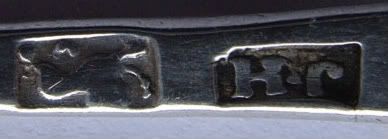Got this pair of buckles, and could really use some help on them as they are not really my area of collecting.
As you can see, one has lost the steel mech and has an old addition in the form of the the pin being replaced with a silver one. They are around 83mm long, so quite large.
Apart from that they are both rather nice. Any help on the hallmarks or any other info greatly appreciated.
The kings head looks like George 3 (1786 onwards mark) but was hoping someone might recognise the makers mark? Looks like 'MP' or something P anyway.
It's been suggested that the maker might be 'HP' Hampston & Prince?



